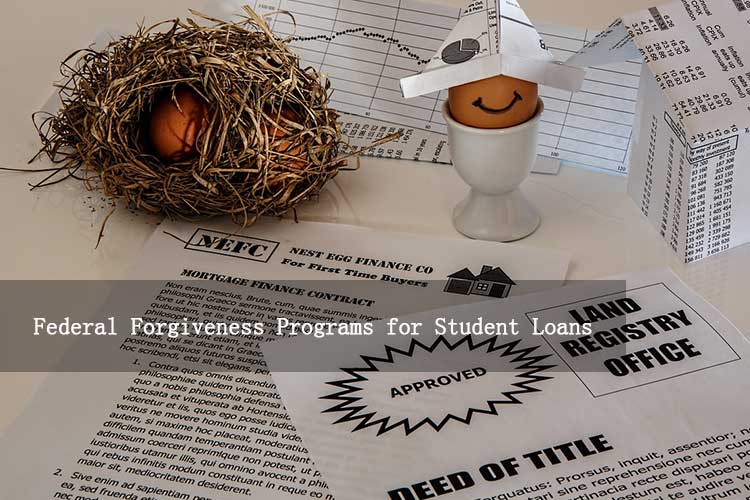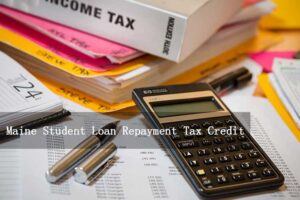
Federal Forgiveness Programs for Student Loans provide essential support for those facing the burden of long-term debt. With recent updates and changes in policy, particularly in 2024, it’s important to grasp how these programs function. Whether you’re a teacher, a public service worker, or someone who has been diligently repaying loans for years, this guide will help you navigate the federal forgiveness options, explain their workings, and outline the qualifications needed to benefit from them.
Overview of Key Federal Forgiveness Program For Student Loans
The U.S. government offers several federal forgiveness programs for student loans, each designed for specific groups and situations. The most prominent ones include:
- Public Service Loan Forgiveness (PSLF)
- Income-Driven Repayment (IDR) Forgiveness
- Teacher Loan Forgiveness
- Closed School Discharge
- Fresh Start Program for Defaulted Loans
These programs have varying eligibility requirements but share a common goal: reducing the financial burden of student debt.
Public Service Loan Forgiveness (PSLF)
PSLF is one of the most well-known forgiveness programs. It rewards borrowers who work full-time in public service or nonprofit roles by forgiving the remaining balance after 120 qualifying payments (10 years). The following are key features:
- Eligible employment: Government jobs or roles at qualifying nonprofit organizations.
- Loan type: Only Direct Loans are eligible. Other federal loans, such as FFEL loans, must be consolidated into a Direct Loan.
- Repayment plan: Borrowers must make payments under an income-driven repayment (IDR) plan to qualify.
Recent Updates for PSLF:
- Temporary Expanded PSLF (TEPSLF): Some previously ineligible payments, including those made under different repayment plans, may now count towards forgiveness under expanded rules.
- October 2023 Reset: Borrowers who had payments rejected under old PSLF rules are now eligible for review under the new guidelines, so it’s worth revisiting your PSLF status (Finance smarter ) (NerdWallet: Finance smarter)
Income-Driven Repayment (IDR) Forgiveness
IDR plans allow borrowers to adjust their monthly loan payments based on their income. If you make qualifying payments for 20 or 25 years, the remaining loan balance is forgiven. The most common IDR plans include:
- Revised Pay As You Earn (REPAYE)
- Pay As You Earn (PAYE)
- Income-Based Repayment (IBR)
- Saving on a Valuable Education (SAVE) Plan
Key Changes in 2024:
- One-Time IDR Adjustment: In 2024, many borrowers will benefit from a retroactive adjustment that counts past periods of forbearance, deferment, or late payments towards forgiveness. Borrowers who have already made 20-25 years of payments may receive automatic forgiveness through this adjustment (NerdWallet: Finance smarter)
- SAVE Plan Improvements: The SAVE plan replaces REPAYE, offering lower monthly payments and increased protections against interest buildup, making it one of the most attractive repayment options for borrowers today (NerdWallet: Finance smarter)
Teacher Loan Forgiveness
The Teacher Loan Forgiveness Program is specifically designed for educators who work in low-income schools. After teaching for five consecutive years, teachers can receive up to $17,500 in forgiveness for Direct or Stafford loans.
- Loan Amount: Up to $17,500 for math, science, and special education teachers. Other educators may qualify for up to $5,000.
- PSLF Overlap: Teachers can qualify for both Teacher Loan Forgiveness and PSLF, but only for separate repayment periods. For example, you can use Teacher Loan Forgiveness for the first five years and PSLF for the subsequent years.
Closed School Discharge and Fresh Start Program
If your school closes while you’re enrolled or soon after you withdraw, you may qualify for a Closed School Discharge, which cancels your loans. Additionally, borrowers with loans in default can benefit from the Fresh Start Program. This initiative, introduced after the pandemic pause, allows borrowers in default to regain good standing and access IDR plans without penalties.
Eligibility Requirements for Federal Forgiveness Programs
While specific requirements vary across programs, these general criteria apply:
- Loan type: Federal Direct Loans are required for PSLF and IDR forgiveness. Borrowers with FFEL or Perkins loans must consolidate them into Direct Loans to qualify.
- Qualifying employment: For PSLF, full-time employment at a qualifying nonprofit or government agency is required.
- On-time payments: Payments must be made under an IDR plan or another eligible repayment plan to count towards forgiveness.
- Consolidation deadlines: Some borrowers must consolidate their loans by specific dates (e.g., April 2024) to take advantage of one-time adjustments (NerdWallet: Finance smarter)
How to Apply for Federal Student Loan Forgiveness
- Enroll in an IDR Plan: Use the Federal Student Aid (FSA) portal to select the right IDR plan for your financial situation.
- Submit PSLF Forms Annually: For PSLF applicants, submit the PSLF form each year to certify your employment and track qualifying payments.
- Track Loan Progress: Monitor your payment status through your loan servicer or the FSA website.
- Consolidate if Needed: If you have older federal loans (like FFEL or Perkins loans), consolidate them into Direct Loans before the deadline.
- Take Advantage of One-Time Adjustments: Borrowers close to forgiveness can benefit from the 2024 IDR adjustment without extra steps—just stay enrolled in an IDR plan.
Common Pitfalls and How to Avoid Them
- Missed Certifications: Not submitting the PSLF employment form annually can delay or disqualify your payments from counting.
- Ineligible Loans: If you have FFEL or Perkins loans, consolidate them into Direct Loans to qualify.
- Skipping Payments During the On-Ramp Period: Although payments between October 2023 and September 2024 are penalty-free, skipping them won’t count towards forgiveness eligibili
Conclusion: Take Control of Your Student Loan Forgiveness Journey
Understanding the federal forgiveness programs for student loans can feel overwhelming, but they offer a straightforward way to achieve debt relief. If you’re a teacher, a public service employee, or a long-term borrower in an Income-Driven Repayment (IDR) plan, the new 2024 regulations present fresh chances for loan forgiveness. It’s important to stay engaged by monitoring your payments, submitting necessary forms promptly, and consolidating loans when needed.
With thoughtful preparation, these forgiveness options can significantly lessen or even wipe out your student debt, enabling you to concentrate on your career and personal aspirations without the burden of financial worry.



